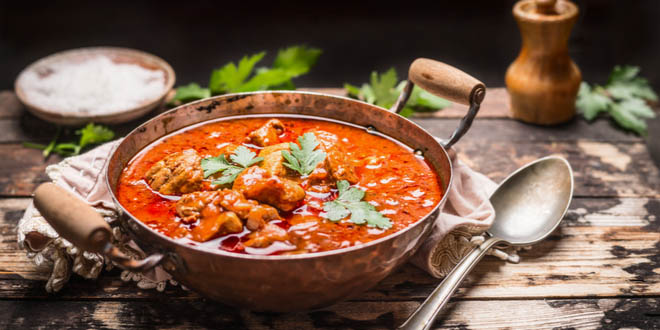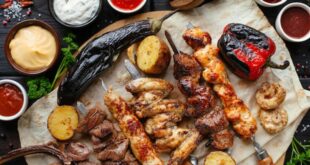Last Updated on December 29, 2018
It is a shame that Eastern Europe is often overlooked when it comes to food. No one knows how to handle cold, dark, long winters quite like those from the harsh climate of North-Eastern Europe. Even if the weather isn’t freezing or snowy, winter can get very dark. So, there are many hot Eastern European foods to warm everyone up. All of them are sure to get you through even the biggest of snow storms.
Syrniki
Syrniki are a great way to start the day. They are essentially cottage cheese pancakes. The batter is generally a combination of cheese, eggs, and flour with a little bit of sugar and salt. Some recipes, however, will call for raisins, semolina flour, or vinegar. This is the beauty of syrniki; they are very accommodating. If you want something more filling and fancy, go for it. If you need something simple, they have you covered. For the most basic recipes, consider adding dollops of raspberry jam and sour cream for the full effect. And if you are a big fan of cheese, don’t miss our article on cheese foundue, it will definitely warm up your body and keep any cheese-lover happy.
Solyanka
Solyanka is the Russian version of casserole. It came into being when the family cook ran out of ingredients. The result is amazing. There are three types, but the most common is meat-based. For vegetarians, there is a mushroom option, and pescetarians can enjoy the fish version. The meat version is based on a stock spiced with peppercorn and bay leaves. Sauteed onions, tomato paste, beef, sausage, olives, lemons, and pickles are some of the other main ingredients. Serve it with sour cream and dill.
Goulash
Goulash is one of the most famous dishes on this list. It is popular throughout most of Eastern Europe but originated in Hungary centuries ago. This beef and potato stew is renowned for its use of paprika.
Bryndzové halušky
Don’t let the accents in this dish’s name scare you off. One of the national dishes of Slovakia, these potato dumplings are a delicious mouthful. Bryndza is a Slovak cheese and halušky are the dumplings. You make the dumplings by combining grated potato, flour, and eggs; then you push the mixture through the holes in a colander. Once you boil the formed dumplings, like pasta, top them with the cheese and pan-fried bacon.
Pelmeni
It seems like every country in Eastern Europe has their own version of dumplings. The Russian one is gaining popularity outside of Europe. And there are many reasons to get on board with this trend. Namely, they are delicious. Also, if you live in a snowy climate, they are easy to store.
TAKEAWAY: Pelmeni originated in Siberia. Families would get together and make a winter’s supply all at once. Each person would take one task: rolling dough, cutting circle, adding meat, and closing them up. When they were ready, they would open the window and stick them in the snow outside. This would freeze the entire stash. The cook could then grab some from the window whenever they were ready to eat. As you can see, pelmeni was essential a freezer dinner before the freezer existed.
Vareniki
Some people would combine pelmeni and vareniki into one category, though this doesn’t give vareniki its due credit. The two are very similar. Vareniki are, however, far more versatile. Ask for pelmeni, and you get dumplings with beef. Ask for vareniki, and the waiter will wait for you to clarify what type. It’s akin to asking for a sandwich. What do you want inside? There are savory types with potatoes, mushrooms, and more. There are also sweet types though. Those are often filled with cherries.
Piparkoogid
Estonian is often considered one of the cutest languages in Europe. Their name for gingerbread cookies is an excellent example of why. There are lots of great foods from Estonia, and the Baltic in general. Like many dishes on this list, piparkoogid have a cousin dish. For those who prefer thicker cookies, try pryaniki. These are a Russian spice cookie which features honey as one of their key ingredients. Both varieties should be served with tea sweetened with raspberry jam for the full Northern-European effect.
Bonus! Drinks
Eastern Europe is often associated with Vodka. This isn’t a misrepresentation of the region’s alcohol, but it skates over the far more gentle regional beverages. Serve tatra tea hot and imagine you just got done skiing in the Tatras mountains in Slovakia. For more of a city vibe, look for Riga Black Balsam. No one does hot cocktails like Latvia.
Eastern Europe gets a bad rap when it comes to food. Nonetheless, there are tons of delicious dishes from this region. Potatoes, sour cream, and dill feature heavily throughout. But, as someone who doesn’t like the last two of those items, I can assure you, there are plenty of wonderful ways eat up in Eastern Europe.
 Travel for Food Hub The Food Blog for Travel Lovers
Travel for Food Hub The Food Blog for Travel Lovers









